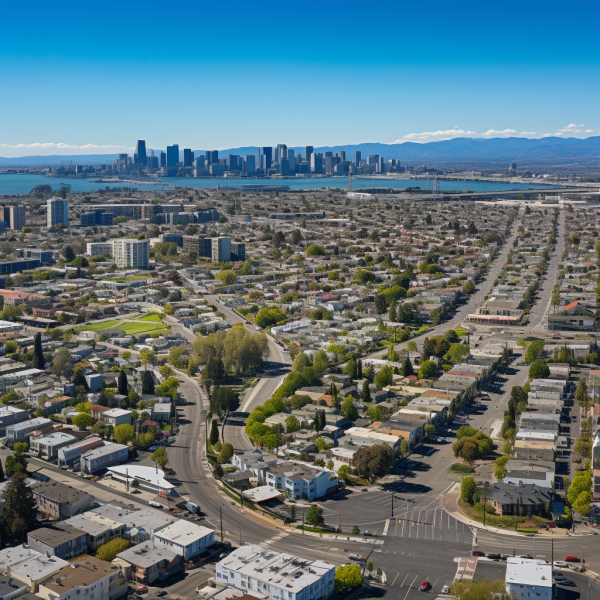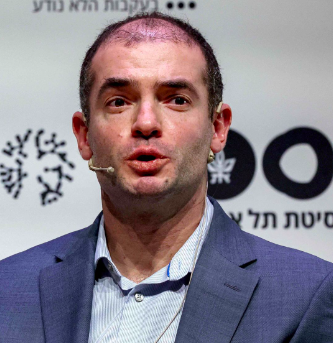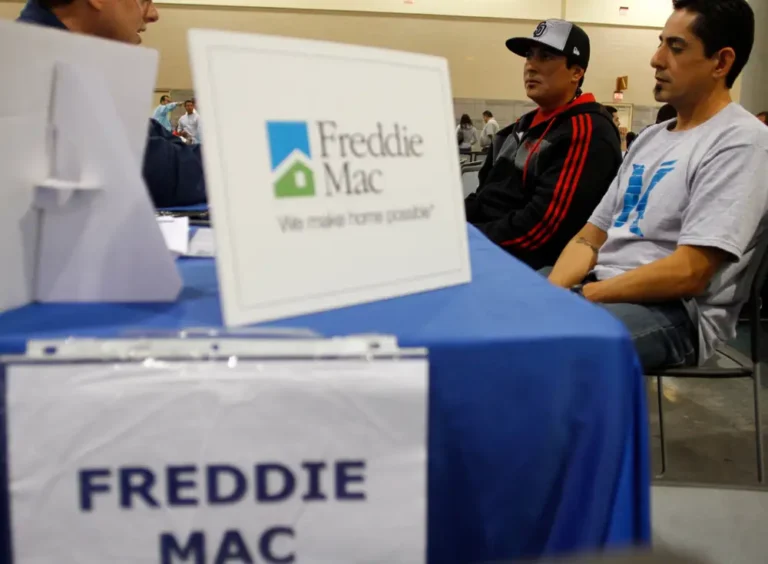Amazon built a data center empire in northern Virginia. Exclusive filings reveal it’s using as much energy as a major city.

- Amazon is in the midst of $87 billion of data center development in Virginia.
- The company’s data centers in the state can consume about half the power of New York City.
- It’s the largest player in a fast-growing industry that could stress grids and speed the climate crisis.
Amazon is in the midst of a far larger, and less visible, building boom just a few miles from its $5 billion second headquarters outside of Washington, DC.
The company is currently developing $87 billion in data centers, a push that has already elevated it to the top of the world’s largest data center market in northern Virginia. The featureless, warehouse-like structures are easy to overlook along highways or tucked unassumingly among suburban neighborhoods.
Data centers, such as Amazon’s, play an increasingly important but unseen role in modern life, housing the digital infrastructure that powers critical functions such as e-commerce, self-driving cars, video streaming, and, now, artificial intelligence.
However, there is a flip side to their now ubiquitous presence in places like Northern Virginia. The facilities consume so much power that they have begun to tax entire energy grids, potentially exacerbating the climate crisis.
Amazon does not reveal how many data centers it owns, where they are located, or how much electricity they use. Amazon Web Services, the company’s large cloud computing business, provides software, storage, and other services to legions of customers through its data centers.
According to a review of permits obtained through a Freedom of Information Act request, Amazon operates, is building, or is planning to build 102 data centers in northern Virginia. When completed, the facilities will have emergency generators capable of producing more than 4.6 gigatonnes of power. On an average day, that’s nearly enough backup electrical capacity to power all of New York City.
Backup power is installed as standard practice in the data center industry to protect against electrical interruptions and almost always exceeds the amount of electricity a facility actually consumes. According to Shaolei Ren, an electrical and computer engineering professor at UC Riverside who studies power use in data centers, data centers typically use at least 60% of the power that a facility’s backup generator is capable of producing to allow for redundancy.
That means Amazon’s northern Virginia data center portfolio will have a power footprint of at least 2.7 gigatonnes, which is 35% larger than the entire power grid of the company’s hometown of Seattle.
An Amazon spokesman, David Ward, declined to comment on Insider’s analysis of the company’s energy footprint in northern Virginia, saying only, “Your estimate is inaccurate.”
“All of a sudden, really for the first time in a generation, we’re starting to see load growth become a major concern,” said Abraham Silverman, managing director of Columbia University’s Center on Global Energy Policy. “Data centers are coming in, driving hundreds of thousands of megawatts of new load.”
Many of Amazon’s data centers listed in the permits have recently been built, and some may still be in the works. A small number appear to have yet to break ground, implying that it could take years for the facilities to ramp up their operations to the point where they are consuming power at close to capacity, according to experts.
Data center developers and users frequently build spaces that are larger than they initially require, “with the expectation that they’ll ramp up to it over 10 years or so,” according to Sean Brady, a managing director with Cushman & Wakefield’s global data-center advisory group.
Other evidence suggests that Amazon is not yet operating its portfolio at full capacity. Dominion Energy, Virginia’s local utility, revealed that data centers in the state consumed 2.8 gigatonnes of electricity in 2022. Although the company does not break out individual consumer demand, Amazon was most likely only responsible for a portion of it.
Why Virginia will need a power grid the size of France’s
However, power providers are already preparing for the daunting task of meeting the expanding needs of the data center industry. Their solutions could have far-reaching societal implications.
PJM Interconnection, a regional transmission operator whose territory includes Virginia, predicts that the state’s grid will need to double in size over the next 15 years, putting it on par with all of France. The expansion will cost billions of dollars, which could be borne by ratepayers across the state.
Dominion Energy recently proposed deferring the retirement of fossil-fuel-burning infrastructure, building new gas-fired power plants, and exiting the Regional Greenhouse Gas Initiative, an effort with 11 neighboring states to limit carbon emissions from power plants, to meet such an ambitious expansion.
Glenn Youngkin, Virginia’s Republican governor, championed the plan, which will need to be approved by the State Corporation Commission, the state’s public-utilities regulator.
As data centers spread across the country and the power-hungry demands of artificial-intelligence software become apparent, energy experts warn that efforts to reduce carbon across more grids may be jeopardized.
According to Terry Boston, a former PJM president and CEO who retired in 2015, renewable energy often falls short of meeting the massive, round-the-clock power requirements of data centers.
“You cannot run a data center based on the variability of solar and wind,” Boston explained. “There’s a lot being studied, but studies don’t keep the lights on.”
Boston added that utility providers facing significant power increases due to data-center development would be especially hesitant to retire fossil-fuel infrastructure until renewables’ reliability is established or there is more battery storage capacity to create backup reservoirs of power.
“You don’t tear down your old barn until the new barn is built,” he explained.
The reality of Amazon’s renewable energy claims
Amazon spent approximately $52 billion on data centers in Virginia between 2011 and 2021, and has proposed an additional $35 billion in data facilities in the state by 2040, for a total investment of $87 billion.
As public awareness of its data centers’ increasing power requirements grew, the company sought to send a reassuring message about its operations and ambitious expansion plans. Images of windmill-dotted sunflower fields and sheep grazing against rows of solar arrays appear in its sustainability statements. Last year, the company announced that its data centers in northern Virginia are now powered entirely by renewable energy.
However, Amazon’s claim has a more nuanced — and far less green — reality.
According to the Virginia Department of Environmental Quality, renewable energy currently accounts for only 7% of the grid’s power.
To ensure that its operations are powered by clean energy, Ward, an Amazon spokesman, stated that the company currently sources about 1.7 gigatonnes of renewable energy from solar and wind projects connected to the grid via power-purchase agreements. Amazon intends to tap an additional 4.2 gigatonnes in this manner. Although the new green energy technically flows into the grid rather than directly to Amazon’s facilities, the purchase agreements allow the company to claim it.
Amazon also states that it “may choose” other green power procurement methods, such as obtaining renewable energy certificates, or RECs. Any renewable energy producer can sell one REC for every megawatt hour of renewable energy generated. Buyers are frequently corporations or governments that need to demonstrate proof of renewable energy generation in order to meet compliance or voluntary sustainability targets.
Both approaches, according to environmental and energy watchdogs, are commendable steps for corporate power consumers. However, they warned that the strategies lose credibility if the renewable energy obtained does not match the characteristics of the energy consumed. Even though a power purchaser like Amazon can theoretically buy enough solar energy to compensate for its nighttime operations, they say solar facilities, where Amazon gets the majority of its renewable power on the PJM grid, can’t be counted as a solution for the power its data centers use at night.
In comparison, Microsoft and Google, both of which have sizable data-center portfolios, disclose basic energy consumption details that Amazon does not, such as how much electricity their operations use each year and how they obtain clean energy.
Furthermore, some energy experts are concerned about RECs, which are sold on an unregulated market.
“RECs have a mixed track record, and they have certainly been misused, and there has been greenwashing,” said Ben Hertz-Shargel, an executive at Wood Mackenzie, an energy research and consulting firm. “Retiring a REC from two states over two years ago and calling it offsetting my power consumption from yesterday is not an accurate representation of sustainability.”
Amazon’s spokesman declined to comment on the company’s REC purchases or how solar energy might compensate for nighttime data center operations.
Apple goes even further, documenting the amount of power consumed by each of its data centers.
Data-center operations consume the most power for large technology companies, making transparency about the sustainability of the energy used for these facilities critical to evaluating their environmental track record.
Priya Barua, the director of market and policy innovation at the Clean Energy Buyers Association, an industry group whose members include Amazon and other large corporate purchasers of renewable energy, was struck by the stark contrast between Amazon’s claims and its lack of disclosures.
“If someone says, ‘We’ve met this huge goal and we have zero transparency around any of it,’ then I might be skeptical,” Barua said.
Amazon’s permits provide a view into the size of its data center operations
Northern Virginia, now home to a rapidly expanding cluster of high-tech facilities, has long been a data-center hub. In this dense ecosystem of customers, service providers, and developers, tethered by a robust fiber-optic network that has long served federal government agencies, the industry has thrived. It is commonly stated that approximately 70% of the world’s internet traffic passes through cabling and servers located in the area.
In a business that values secrecy and security, Amazon’s lack of transparency is not unusual.
QTS, a data center developer and operator that was bought out by the investment firm Blackstone in a $10 billion deal in 2021, discloses its portfolio’s electrical usage but conceals its most recent greenhouse gas emissions.
However, in Virginia, the industrial-scale backup-power systems that most data centers install on-site are required to have air-quality permits in order to operate. The permits reveal how much power a facility’s backup generators can produce, which serves as a proxy for the facility’s power consumption.
The permits are not public, but Insider obtained copies of permits related to Amazon’s data centers in northern Virginia after filing a Freedom of Information Act request with Virginia’s Department of Environmental Quality.
Industry estimates differ on the relationship between a data center’s computer and cooling power capacity and total backup generation.
Weston Swenson, CEO of Novva, a West Coast data-center operator and developer, stated that his facilities typically have twice the backup power of their server load, but that cooling systems consume additional power, accounting for up to nearly 70% of a facility’s backup generation.
According to Brady, the Cushman & Wakefield data center executive, data centers frequently match backup generation to the capacity of a data center’s power supply. To provide a safety margin and avoid overloading the grid or exceeding the amount of backup generation, the facilities generally ramp up their operations gradually to no more than 80% of their potential capacity. A 100 megawatt data center, for example, would have 100 megawatts of backup power but would only use about 80 megawatts for operations.
Swenson and Brady stated that they could not comment specifically on Amazon and that their calculations were intended to provide their own perspective on industry practices that could differ. According to their calculations, Amazon’s power consumption could reach more than three gigatonnes within its current data center footprint–and possibly more as the company scales its operations.
The data center industry has sought to portray itself as a clean energy champion
Amazon may be the colossus of the Northern Virginia data-center market, but a growing number of users and developers are clamoring for similar scale.
According to CBRE data, 918 megawatts of data-center construction is currently underway in northern Virginia, with 3.9 gigatonnes of planned projects ready to break ground — a record number.
According to PJM, the regional transmission operator that coordinates the flow of energy in Virginia, data centers may require an additional 7.5 gigatonnes of energy to operate in the state over the next five years. According to a PJM forecast issued earlier this year, Virginia’s state grid may need to be doubled in size over the next 15 years to 41 gigatonnes, roughly the size of France’s grid. According to the operator’s forecast, data centers will account for the majority of the additional demand.
Dominion Energy has proposed a variety of energy sources, including modular nuclear reactors and gas turbines, to achieve that expansion. The Virginia Clean Economy Act, which was passed in 2020, requires Dominion to produce 100% renewable energy by 2045. However, the utility has stated that it may need to postpone the installation of solar and wind projects required to comply with the law in order to maintain system reliability and meet soaring demand.
“A diverse resource mix will ensure that the company is able to meet the needs of customers,” according to the company’s plan.
Despite its growing appetite for power and the potential delay in greening the grid, the data-center industry has insisted on being a champion of clean energy and has sought to challenge perceptions of its power consumption. Earlier this summer, a representative from the Data Center Coalition, an industry lobbying group, objected to being blamed for the state’s skyrocketing power needs in front of the state’s power regulator.
“We ask the commission not to lose sight of the energy, climate, and economic benefits unlocked by data centers,” Data Center Coalition President Josh Levi told the regulator. “They are highly efficient facilities that are driving clean-energy development.”






